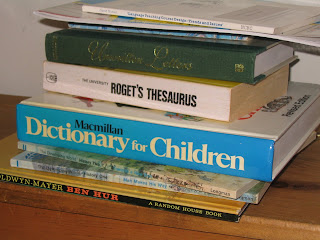Our young son is very strong-willed, a friend confides to my husband.
I don't know what to do about it. Can you suggest anything? My husband, who has worked in family counseling for years, smiles and replies:
If your son is strong-willed, be happy! A strong-willed child won't be manipulated and led astray by friends when he is a teenager! It's the compliant kids you have to worry about!I sit there and listen: Is it true? We are who we are - for life?!
My husband's words come to mind recently - after I try (unsuccessfully) to persuade my 89-year-old mother to let the nurse in the retirement residence take charge of her daily medication.
I mention that two doctors and a pharmacist have all told me that she seems confused at times about her medication. I remind her that she got the instructions wrong the last time she had antibiotics - she remembered the opposite of what the pharmacist had said. But she stubbornly denies it - even though I was with her at the time. For me it was the wake-up call that the doctors were right: her medication needs to be monitored more carefully.
But she refuses to listen.
They don't know what they're talking about, she replies, indignant.
You have too many pills now. It's easy to get confused.I don't get confused, she insists. I have it all written down.As I drive home, exasperated, I wonder: When did this stubbornness start?
But looking back I see - not blind stubbornness, but stubborn determination: My mother, as a young girl, determined to be a teacher, even though nobody in her family had completed high school, let alone Teacher's College or "Normal School," as it was then called. But she persisted in her dream, boarding with a family in the city, so she could attend high school, paying for her room and board by working as a housekeeper and babysitter, doing her homework when all her other tasks are done.
And after completing high school, she still needed $300 for tuition for Normal School. It was a lot of money in those days: the equivalent of a year's salary for a teacher starting out. Her mother told her that her dream was impossible: they couldn't afford the tuition. She would need to get a job like her two older siblings.
She decided to work as a maid for a year and save her money. She sent her earnings home, for her mother to keep until she needed the money to pay her fees.
But when a year was over and she asked her mother for the tuition funds that she had entrusted to her, her mother sadly told her that she didn't have it. It was all gone - used to help feed and clothe their large family.
My mother burst into tears. Her mother, saddened that she had unintentionally betrayed her daughter's trust, came up with a plan. She drove into Edmonton to ask friends for a loan. Fortunately, they agreed, and my mother had the tuition money she needed for the first day of Normal School. Later she would pay the money back in full from her salary as a teacher.

Again I see her determination when, after graduating from Normal School, at the age of 20, she headed north, alone, by train, to a one-room country schoolhouse in the isolated Peace River Country. She did not return home for almost a year - until the following June, when the school year was over. Then in August, she returned North again for her second year. In those days, you had to teach up North for two years before being allowed to teach in the city.
Time and time again, determination marked her life.
Only now that she is 89, I - her daughter - see it as stubbornness!



















































